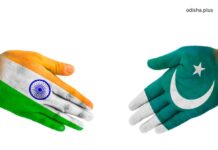Linking financial aid with skill development programs, market access for women entrepreneurs, financial literacy initiatives, and access to other social welfare schemes would make it meaningful
Pradeep Biswal

In their election manifesto for the 2024 general election, the BJP made a promise to launch the Subhadra scheme, under which every woman will receive a cash voucher of Rs 50,000, which can be encashed over two years. This created euphoria among women of all classes to vote for BJP. However, after coming to power the new government weighed various options and the availability of resources for such an ambitious agenda.
Finally, exclusion clauses were introduced and it was designed in such a manner as it would save the government as well as the beneficiaries. Instead of every woman it was limited to women between 21 to 60 years of age not getting benefits from any other government schemes and fifty thousand not in one go but at the rate of Rs 5000 in six months during five years aggregating to the promised amount of Rs 50000.
Not Enough
The scheme, while aiming to empower women through financial assistance, faces several challenges that could limit its “game-changing” potential. The scheme provides ₹50,000 over five years, translating to a mere ₹833 per month. This amount is widely considered insufficient to make a significant impact on beneficiaries’ lives, especially in the face of rising commodity prices. It’s barely enough to cover basic expenses, let alone foster substantial financial independence or entrepreneurial ventures.
Despite efforts, many rural women are still unaware of the scheme, hindering its reach and impact.
Technical Glitches
Applicants have faced issues with Aadhaar linking, OTP verification, and ensuring their bank accounts are DBT-enabled. Tribal women in remote areas without a mobile phone could not access it. A significant number of applications have been pending due to these procedural and technical hurdles.
Thousands of applications have been rejected due to criteria like land ownership, a family owning a four-wheeler, or a family member being a government employee, leading to concerns about inclusion and coverage.
Some beneficiaries have expressed doubts about how to best utilize the funds for empowerment, indicating a need for more guidance and support beyond just monetary transfer.
Women already receiving ₹1,500 or more per month from other government schemes are ineligible. This exclusion, while intended to prevent duplication, might leave out many deserving women who could benefit from additional support.
The scheme has specific age and date criteria, which might exclude some women who are otherwise eligible but fall outside these narrow windows.
Inflationary Pressure
Some critics suggest that the launch of such a large-scale cash transfer scheme without adequate economic safeguards could contribute to inflation, thereby offsetting the benefits for the beneficiaries.
While financial support is crucial, true empowerment often requires a more holistic approach that includes access to education, skill development, market linkages for entrepreneurial ventures, and social support systems. If the scheme primarily focuses on direct cash transfers without sufficient complementary measures, its long-term impact on women’s economic and social standing might be limited.
The scheme was a significant poll promise by the ruling party. While this can ensure initial momentum, sustained “game-changing” impact requires consistent, non-partisan implementation and adaptation based on ground realities, rather than being solely driven by political cycles.
A more substantial amount that allows for real investment and economic mobility. If the coverage was intended for one crore women in five years it could have been designed to include twenty lakh beneficiaries in one year with a cash voucher of Rs 50000/ at a time so that it could have a significant impact on their economic empowerment.
Tokenism Pitfalls
The tokenism of the present system does not add to their economic empowerment by any stretch of the imagination. Addressing technical glitches, streamlining processes, and aggressive awareness campaigns, especially in remote areas would make it successful.
Linking financial aid with skill development programs, market access for women entrepreneurs, financial literacy initiatives, and access to other social welfare schemes would make it meaningful. Re-evaluating exclusionary criteria should be made to ensure the most vulnerable women are not left out.
Continuous assessment of the scheme’s impact and adaptability to address emerging challenges should be conducted possibly through collaborations with research institutions like IIM-Sambalpur, which is already studying its impact.
Finally, it may be said that while the Subhadra scheme is a commendable initiative to financially empower women in Odisha, its current design and potential implementation hurdles suggest that it may not achieve a truly “game-changing” status without significant adjustments and a broader, more integrated approach to women’s empowerment.
(Pradeep Biswal, retired IAS Officer, is a bilingual poet writing both in Odia and English. His poems are widely anthologized. He is also an editor and translator of repute. Views are Personal)



























